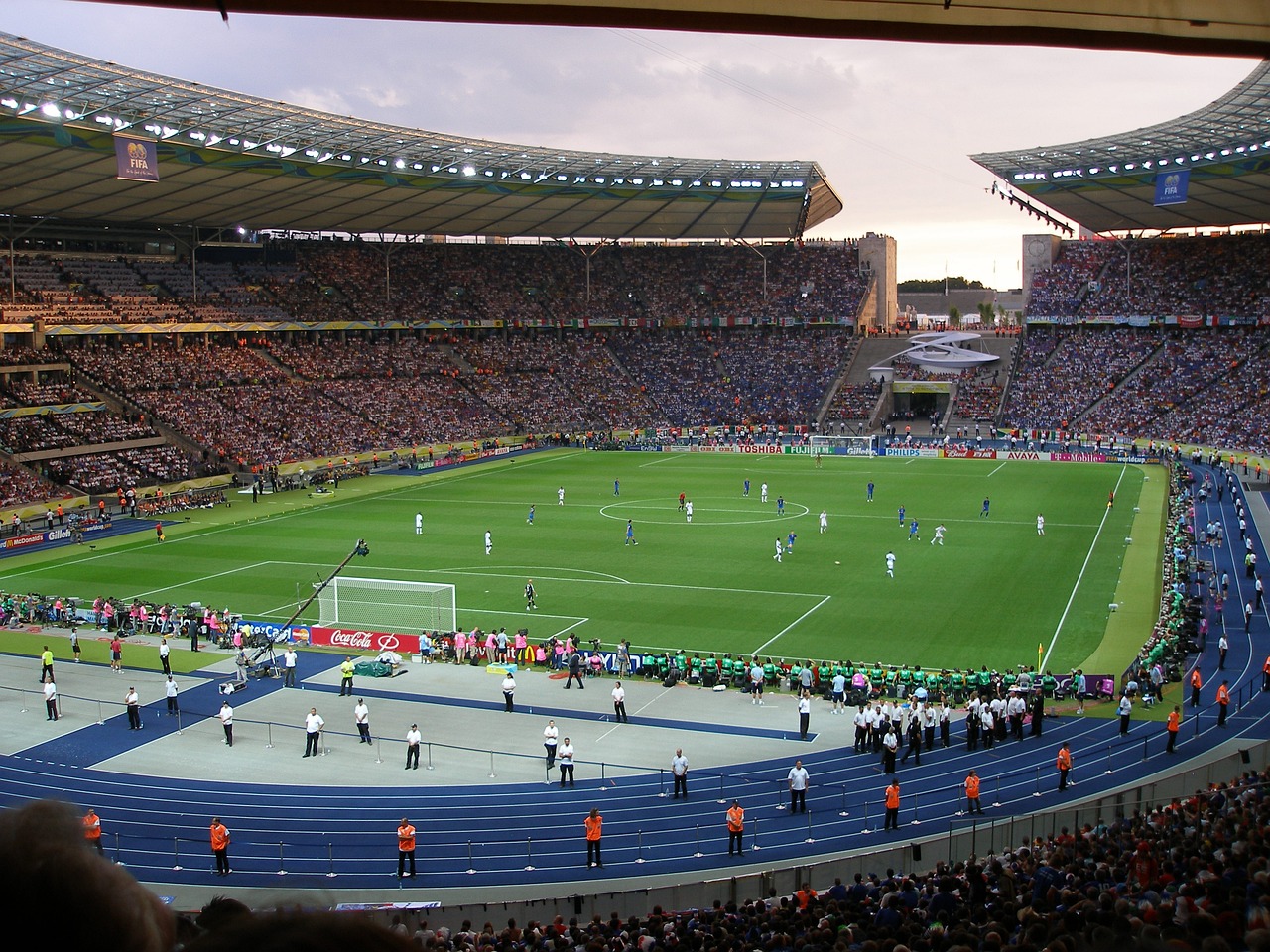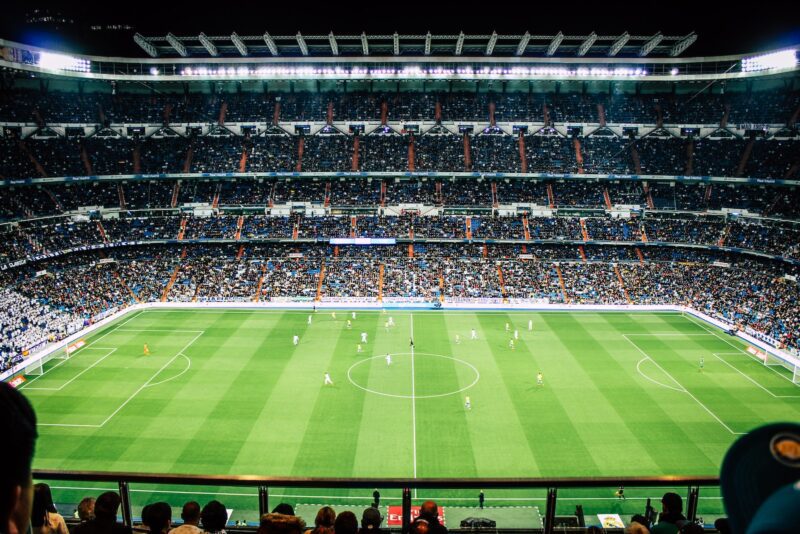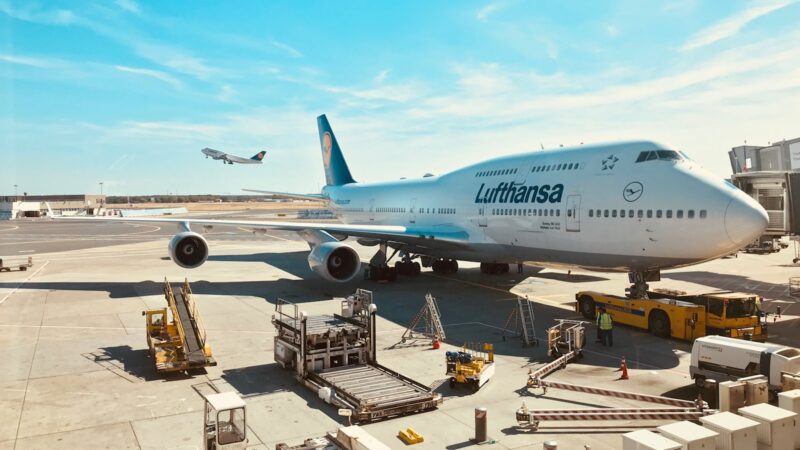Imagine the thrill of cheering on your favorite football team amidst a sea of roaring fans from around the world. All gathered to witness one of the most anticipated sporting events in history – the 2026 World Cup. This extraordinary event, co-hosted by the United States, Canada, and Mexico, is set to be a memorable celebration of unity, passion, and the beautiful game of football.
For the first time ever, the tournament will feature 48 teams from various countries, providing a platform for emerging talents to showcase their skills on the world stage. With matches occurring across three nations, it’s not just about the competition; it’s a unique opportunity to explore the diverse cultures that make each host country special.
As anticipation builds for the 2026 World Cup, fans worldwide eagerly await match schedules, ticket information, and the chance to be part of this unparalleled event. So, mark your calendars and gear up for a phenomenal journey you won’t want to miss.
Check out this post for getting tickets to Wimbledon 2024 and this one for going to Super Bowl 2024
Table of Contents
ToggleThe Road to 2026 World Cup
Bidding Process
The bidding process for the 2026 FIFA World Cup was both competitive and intricate. Several countries expressed their interest in hosting the event, with locations spanning multiple continents. As countries evaluated their resources and infrastructures, they prepared enticing bids in hopes of winning the privilege of hosting this world-renowned competition.
As the process unfolded, it became clear that many nations were embracing the spirit of collaboration. Joint bids emerged, presenting unique opportunities for multiple countries to share the responsibility and benefits of hosting an international tournament of this magnitude. Among these collaborations, one stood out as particularly unprecedented and ambitious.
Host Selection
The ultimate winners of the bidding process were a trio of North American nations: the United States, Canada, and Mexico. Officially joining forces, this partnership was an exciting, historic moment for the World Cup, with three neighboring countries coming together to co-host the competition for the first time. This monumental decision was announced by FIFA in 2018, igniting a building of excitement throughout the continent.
As the host countries, the responsibilities are divided among the three nations. The United States will serve as the primary host, with the majority of matches taking place on American soil. However, Canada and Mexico aren’t to be forgotten. Both countries will host a significant number of matches, showcasing their own impressive stadiums and vibrant cities.
As the anticipation for the 2026 World Cup intensifies, soccer enthusiasts and host nations alike eagerly await what promises to be an unforgettable tournament experience. The collaboration between the United States, Canada, and Mexico signifies not only an exciting future for international soccer but also a testament to the unifying power of sports.
World Cup 2026 Host Countries
The 2026 World Cup will take place across three spectacular host countries: the United States, Canada, and Mexico. These nations will join forces to create an unforgettable experience for the millions of fans attending this highly anticipated event. Let’s dive into what each country brings to the table!
United States
As the largest country out of the three hosts, the United States will offer a diverse selection of world-class stadiums, fan-favorite cities, and exceptional infrastructure to accommodate the influx of soccer enthusiasts.
With an array of iconic locations, ranging from the bustling metropolis of New York City to the sun-soaked paradise of Los Angeles, there will be no shortage of breathtaking backdrops for this exceptional event. Expect thrilling soccer matches at outstanding stadiums, thrilling fan experiences, and the chance for once-in-a-lifetime memories.
Canada
Oh, Canada! The nation known for its friendly locals, pristine wilderness, and rich culture will be an incredible backdrop for the 2026 World Cup. Soccer fans will have the chance to explore cities like Toronto, Vancouver, and Montreal, each with its unique vibe, world-renowned hospitality, and fascinating tourist attractions. Get ready for unforgettable games, exciting adventures, and the warmth of Canadian charm!
Mexico
From vibrant cities to stunning beaches, Mexico is set to add a splash of color and energy to the 2026 World Cup. The nation boasts a football-loving culture that’s passionate, lively, and absolutely contagious.
Expect pulsating games set against the backdrop of awe-inspiring landmarks like the ancient ruins of Teotihuacan or the enchanting beauty of Mexico’s famous plazas. With the warmth of its people, the allure of its magical towns, and a delightful blend of history and contemporary life, Mexico is sure to leave fans satisfied.
Tournament Format
The 2026 World Cup promises an exciting new format that offers more action for football fans across the globe. The revamped tournament structure will include two main stages: Group Stage and Knockout Stage.
Group Stage
For the 2026 World Cup, FIFA has decided to switch back to a four-team group format. There will be a total of 16 groups consisting of four teams each source. This shift from the initially proposed three-team group stage signifies an increase in the number of matches – a thrilling prospect for football enthusiasts everywhere.
Each team will play three games within their group, facing off against every other team once. The top two teams from each group will progress to the Knockout Stage. A total of 32 teams will move forward. This expanded format is designed to offer more opportunities for smaller nations to shine on the world stage.
Knockout Stage
Once the Group Stage has concluded, the top 32 teams will enter the Knockout Stage. This stage of the tournament will consist of a series of do-or-die matches, starting with the Round of 32 before progressing to the Round of 16, quarterfinals, semifinals, and ultimately, the grand finale.
Only the victor of each game will progress until the final match. As the stakes get higher with every round, football fans can expect breathtaking performances and nail-biting finishes as nations vie for the prestigious title of World Cup champions.
In total, the 2026 World Cup will feature a staggering 104 games, up from 64 in previous iterations source. With more matches, more teams, and a larger spotlight on emerging football powerhouses, the 2026 World Cup is set to be an exhilarating showcase of the beautiful game.
Stadiums and Venues
The 2026 World Cup is set to be a spectacular event, with matches taking place across three countries: USA, Canada, and Mexico. This unique tournament will be hosted in a total of 16 stunning stadiums, each with its own charm and appeal.
USA will be the primary host of this momentous event, boasting 11 impressive stadiums in various cities. Among these venues are the Mercedes-Benz Stadium in Atlanta, Gillette Stadium in Boston, AT&T Stadium in Dallas, NRG Stadium in Houston, Arrowhead Stadium in Kansas City, SoFi Stadium in Los Angeles, Hard Rock Stadium in Miami, MetLife Stadium in New York/New Jersey, and Lincoln Financial Field in Philadelphia. Each stadium possesses unique characteristics, offering fans a diverse range of atmospheres and experiences.
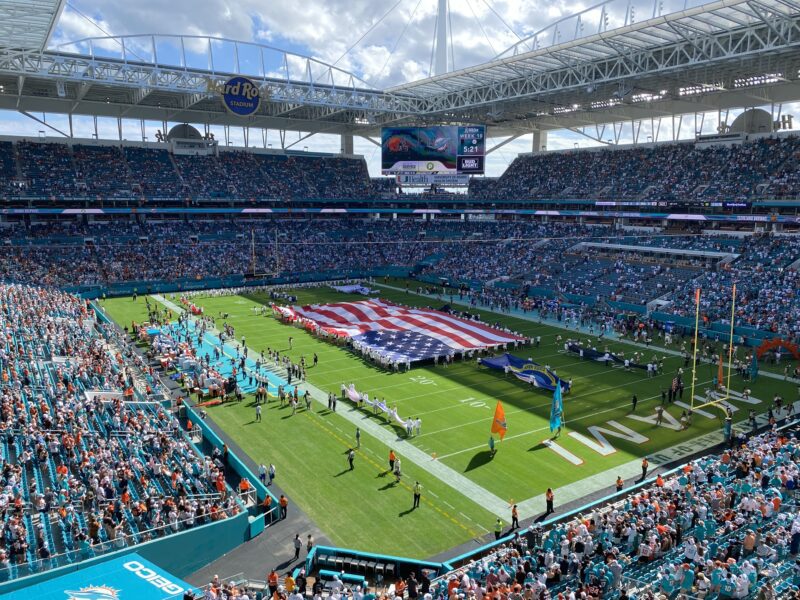
“Hard Rock Stadium during the national anthem before a Miami Dolphins game” by Gatorfan252525 is licensed under CC BY-SA 4.0
Meanwhile, Canada is preparing to charm visitors with two exceptional stadiums. BMO Field in Toronto, the smallest venue on this esteemed list, is expected to expand to 45,000 seats by 2026, ensuring an intimate yet thrilling atmosphere for soccer enthusiasts. Additionally, the Commonwealth Stadium in Edmonton promises to delight spectators with its dynamic setting and cutting-edge facilities.
Mexico will host matches in three remarkable stadiums, further contributing to the celebration of soccer and culture. The Estadio Akron in Guadalajara, Estadio BBVA in Monterrey, and Estadio Azteca in Mexico City will each provide fans with unforgettable experiences as they witness the world’s finest teams battling it out for the prestigious trophy.
In summary, the 2026 World Cup is poised to captivate audiences with its diverse array of world-class stadiums and venues spread across North America. From the bustling metropolises of the United States to the picturesque landscapes of Canada and the rich cultural heritage of Mexico, soccer enthusiasts will undoubtedly create cherished memories in these spectacular arenas.
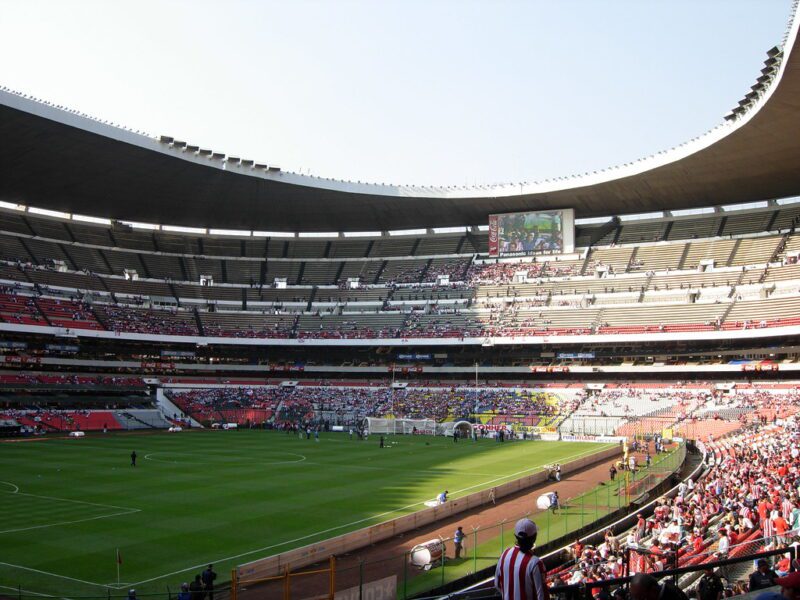
“Estadio Azteca III – Guilermo Cañedo” by JackPiranha is licensed under CC BY 2.0
Legacy and Impact
Economic Benefits
Hosting such a prestigious event can result in significant economic benefits for the local regions. For instance, during the Super Bowl, Houston experienced a net economic impact of $347 million (Forbes). The World Cup, being a month-long event, will likely dwarf those numbers.
Moreover, this event will generate numerous job opportunities, further boosting the economies of the host countries.
Social and Cultural Effects
Another important aspect of the World Cup legacy is its effect on social and cultural change. The 2026 World Cup will undoubtedly improve sports infrastructure by providing the youth with more opportunities to engage in sports. This will cause an increase in participation in soccer at the grassroots level. One example of such an initiative is the ambitious plan to create 26 community pitches by 2026 in the Seattle region (Sounders FC).
Furthermore, the World Cup offers an opportunity for cultural exchange, fostering a sense of unity and celebration among the global community. It showcases the host countries’ culture internationally, fostering more understanding and appreciation for their unique histories and traditions.
The 2026 World Cup will leave an indelible mark, contributing to the growth and development of the host countries, enhancing community spirit, and promoting a lifelong passion for the beautiful game of soccer.
How to Get Tickets
For soccer enthusiasts looking forward to the 2026 FIFA World Cup, getting tickets might seem like a challenging task. But worry not! This section provides a brief guide on how to get your hands on those coveted tickets.
Currently, the tickets for the 2026 World Cup are not available for purchase. But don’t fret! Information related to ticketing will be provided by FIFA in due course. If you really want tickets, it’s essential to regularly check their official page for updates (FIFA World Cup 2026™).
Make sure you register your interest on the official FIFA website to receive notifications and updates regarding ticket sales. This way, you won’t miss any essential information and be the first to know when the tickets go on sale.
Tickets are expected to go on sale around 2025. Therefore you have ample time to plan your trip and make all the necessary arrangements. While you wait, it’s a great idea to consider aspects like accommodation, transportation, and match schedules.
Remember, the key to securing your 2026 FIFA World Cup tickets is to act promptly when ticket sales commence. So, go ahead and mark your calendars, register for updates, and start preparing for the ultimate soccer experience!
FAQ – TLDR
So, you’re curious about the 2026 World Cup? Don’t worry; we’ve got you covered with this FAQ section to help answer some of those burning questions.
When and where is the 2026 World Cup taking place?
The tournament is scheduled from June 8 to July 3, 2026. United States, Canada, and Mexico will be the hosts. With matches spread across these three countries, fans will have the opportunity to experience a truly multicultural celebration of football.
How many teams will be participating in the 2026 World Cup?
In an exciting turn of events, FIFA has expanded the number of teams from 32 to 48. This change will bring more diversity and excitement to the tournament, giving more countries a chance to showcase their footballing prowess.
What’s new about the tournament format?
The 2026 World Cup finals will feature a record 104 games, with each group now consisting of four teams instead of the previous three. Additionally, there will now be a last-32 stage, increasing the thrill for fans and players alike!
How will the qualification process work?
UEFA will have 16 qualified teams. CAF will have 9.5 and for more details on other confederations.
There you have it! This FAQ should give you a good idea of what to expect during the 2026 World Cup. We’re sure it will be an amazing event for all football enthusiasts. So mark your calendars and get ready to cheer for your favorite teams!



